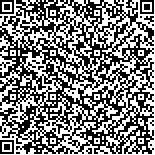|
| 引用本文: | 李奕璇,葛汝平,叶振江,陈洪举,庄昀筠,刘光兴.南黄海近岸海域初夏浮游动物的群落特征[J].海洋科学,2020,44(4):33-43. |
| |
|
| |
|
|
| 本文已被:浏览 1438次 下载 1318次 |

码上扫一扫! |
|
|
| 南黄海近岸海域初夏浮游动物的群落特征 |
|
李奕璇1,2, 葛汝平1,2, 叶振江3, 陈洪举1,2, 庄昀筠1,2, 刘光兴1,2
|
|
1.中国海洋大学海洋环境与生态教育部重点实验室, 山东 青岛 266100;2.青岛海洋科学与技术试点国家实验室海洋生态与环境科学功能实验室, 山东 青岛 266237;3.中国海洋大学 水产学院, 山东 青岛 266003
|
|
| 摘要: |
| 采用2016年7月和2017年6—7月在南黄海近岸海域获取的浮游动物样品,研究了种类组成、丰度、生物量、优势种和生物多样性的变化,并分析其与环境因子的相关性关系。结果显示,两个航次的温盐及浮游动物群落特征差异较大。2016年7月表层平均温度为(22.8±1.8)℃,表层平均盐度为30.0±1.6;2017年6—7月表层平均温度为(25.7±3.6)℃,表层平均盐度为(27.8±4.3)℃。2016年浮游动物的种类数为70种(含浮游幼虫24类),2017年种类数为56种(含浮游幼虫18类)。2016年浮游动物平均丰度(4 838.2±5 186.7 ind·m-3)和平均湿重生物量(324.9±481.5 mg·m-3)均高于2017年(2 652.4±3 507.5 ind·m-3,216.6±245.2 mg·m-3)。两个航次共同的优势种为小拟哲水蚤(Paracalanus parvus)、近缘大眼剑水蚤(Corycaeus affinis)和双毛纺锤水蚤(Acartia bifilosa)。2016年7月的生物多样性略高于2017年6—7月。温、盐等水文特征的差异是造成2016年和2017年夏季浮游动物群落结构变化的主要原因。 |
| 关键词: 浮游动物 南黄海 群落特征 年际变化 |
| DOI:10.11759/hykx20191030001 |
| 分类号:P735 |
| 基金项目:国家重点研发计划(项目编号:2016YFA0601202);国家自然科学基金项目(41876177);中央高校科研基本业务费项目(201822027) |
|
| Community characteristics of zooplankton in the South Yellow Sea in early summer |
|
LI Yi-xuan1,2, GE Ru-ping1,2, YE Zhen-jiang3, CHEN Hong-ju1,2, ZHUANG Yun-yun1,2, LIU Guang-xing1,2
|
|
1.Key Laboratory of Marine Environment and Ecology(Ocean University of China), Ministry of Education, Qingdao 266100, China;2.Laboratory for Marine Ecology and Environmental Science, Pilot National Laboratory for Marine Science and Technology(Qingdao), Qingdao 266237, China;3.Fisheries College, Ocean University of China, Qingdao 266003, China
|
| Abstract: |
| Based on two surveys conducted on the inshore area of the South Yellow Sea in the early summer of 2016 (July) and 2017 (June and July), we studied changes in the composition, abundance, dominant species, and biodiversity of zooplankton. Correlations between the zooplankton community structure and environmental factors were also analyzed. Results showed that the average sea surface temperature (SST), sea surface salinity (SSS), and zooplankton community structure were significantly different between the two surveys. The average SST values from 2016 and 2017 surveys were 22.8℃±1.8℃ and 25.7℃±3.6℃, respectively and mean SSS values were 30.0±1.6 and 27.8±4.3 g/kg, respectively. In 2016, 56 species of zooplankton adults and 24 taxa of larvae were identified, and these values were different from those identified in 2017, which were 38 species of adults and 18 taxa of larvae. The 2016 mean abundance (4 838.2±5 186.7 ind·m-3) and mean biomass (324.9±481.5 mg·m-3) of zooplankton were higher than those of 2017 (mean abundance, 2 652.4±3 507.5 ind·m-3; mean biomass, 324.9±481.5 mg·m-3). The common dominant species found both the surveys were Paracalanus parvus, Corycaeus affinis, and Acartia bifilosa, and the biodiversity in 2016 was slightly higher than that in 2017. The significant differences in SST and SSS between 2016 and 2017 were strongly correlated with the changes in zooplankton community structure. |
| Key words: zooplankton the South Yellow Sea community structure interannual change |
|
|
|
|
|
|
